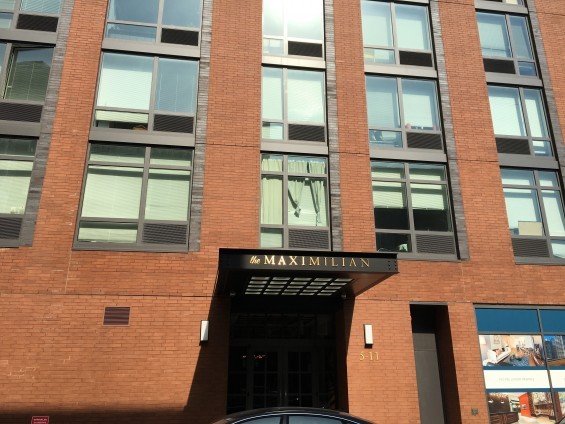
The Maximilian
March 8, 2016 By Jackie Strawbridge
The Queens Council on the Arts, which has called Astoria home since 2013 and was a founding partner of the Kaufman Arts District, plans to relocate to Long Island City in 2018.
The arts nonprofit is slated to move into the Maximilian, a luxury apartment building located near the waterfront at 5-11 47th Ave.
A letter of intent for QCA to lease ground-floor space is in the works, according to Mitch Breindel, spokesperson for Maximilian developers O’Connor Capital Partners.
QCA executive director Hoong Yee Lee Krakauer said that the organization’s plan is to stay in Astoria until the end of their lease in 2018, and then relocate to the Maximilian. She said the move has been approved by the organization’s board.
QCA will be the Maximilian’s largest commercial tenant on the property, Breindel said. The new space will be 5,000 square feet, giving QCA more space than it has in Astoria.
Much of QCA’s work involves professional development for artists, which can involve providing space for exhibitions, performances or classes and workshops. The new Long Island City space will allow QCA to continue this work on a larger scale.
“In our Astoria space, [we can host] one thing, and that’s it,” Krakauer said. “In the new space, it could be two or three things at a time.”
Krakauer added that for many artists who QCA works with, a major challenge is finding space to perform or show their art. She said the organization is considering models for the Maximilian space to be rented out, host short-term artist residencies or be used outside of QCA’s office hours.
As in Astoria, the space will also be used for office and administrative functions.
Krakauer noted that the O’Connor deal has been in the works for almost a decade. She said negotiations started in 2007, before the recession hit.
“We look forward to working with the Queens Council on the Arts to successfully complete our original plan and vision for the property, and we are pleased to be a part of the cultural growth and development of the arts in Long Island City, which is a vibrant cultural center of New York City,” O’Connor Capital CEO William O’Connor said.
Regarding the exit from Astoria, Krakauer said, “I will never leave Astoria. We’re a borough-wide organization, so we’re in every area.”
“We’re still going to be very active in the Kaufman Arts District,” she added. “I don’t foresee it being as painful a leaving as it could be… Astoria and LIC are very close.”

Existing location
3 Comments






it was probably part of the agreement by developer with the city. the developer got concessions – maybe more floor space, more height, more apts, etc., and the city got a space for public use. you see how this usually works out. the city rarely ever collects on their full agreement because the developers have been playing this game a long time. so years later, we finally get the space…
I would be curious to know how this QCA is funded. If it is through tax dollars, I question their choice of using space in a luxury building (or their funding with tax dollars all together). If privately funded, welcome to Hunters Point.
Great news. Welcome to the building!